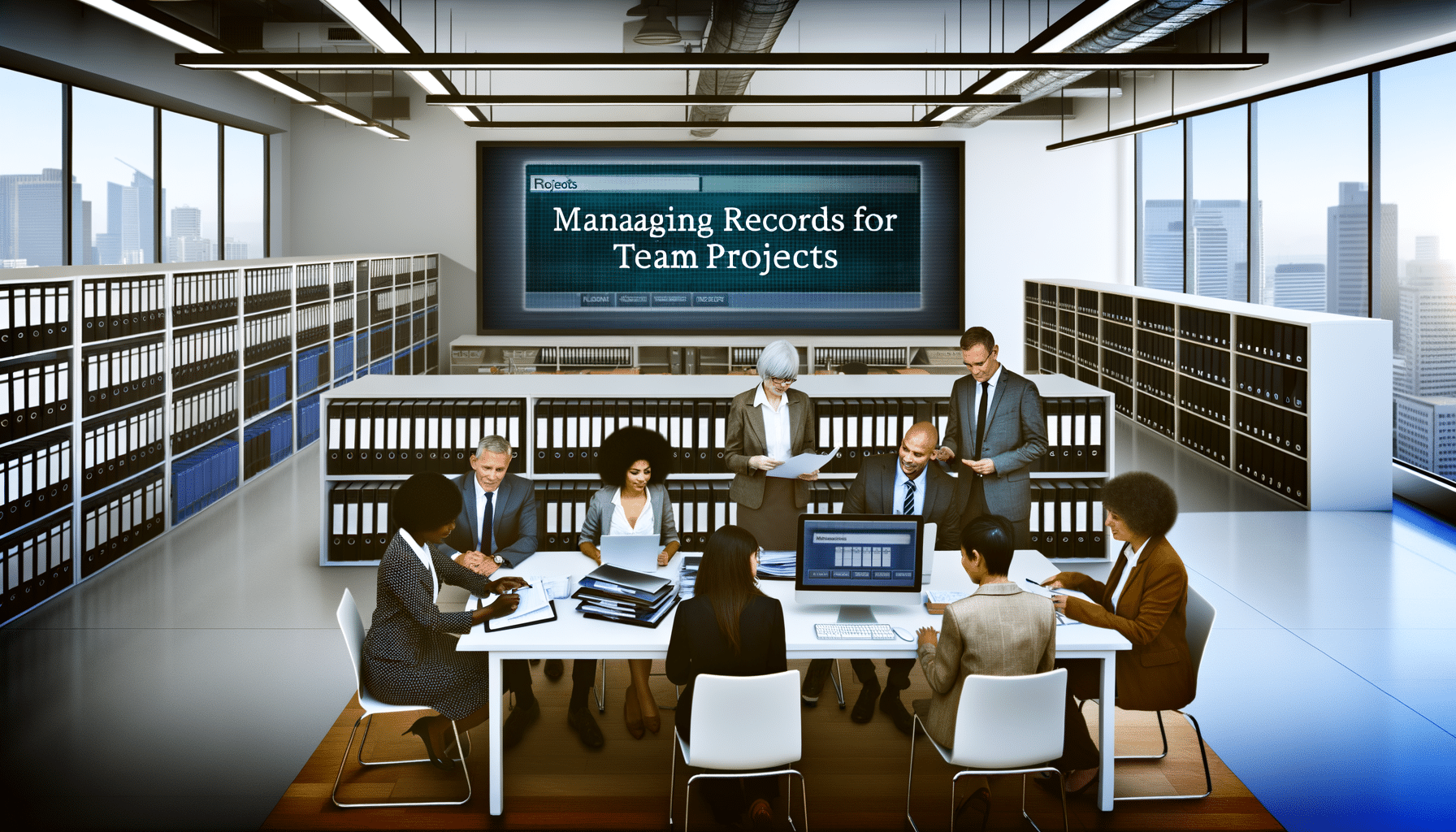- Project Management
- December 18, 2024
Setting Up Temporary Project Archives

Unlocking the Power of Temporary Project Archives
I’ve spent years exploring how data management can be both a powerful ally and a daunting challenge. The realization led to the development of RecordsKeeper.AI—a platform born out of necessity to make record management efficient, compliant, and secure. Today, I want to dive into the concept of **temporary project archives** and how setting these up can streamline project management and enhance productivity.
Why Temporary Project Archives Matter
In the dynamic sphere of project management, the importance of efficient data handling is undisputed. Every project generates large volumes of data that need systematic handling, safeguarding, and retrieval. Often, this requirement is temporary, aligning with the project’s lifecycle. Effective temporary project archives cater to this very need by organizing documents in a way that is easily retrievable and crucially, secure, until the project concludes.
The Challenge of Temporary Storage for Project Files
Handling project archives can feel like walking a tightrope. On one hand, there is the threat of losing critical information, and on the other, being overwhelmed under the torrents of irrelevant data post-project completion. Temporary storage offers a pragmatic solution—storing files efficiently and systematically for the duration they are relevant.
The key challenges often encounter are:
– **Managing Volume:** Projects can produce a significant amount of data that needs organization.
– **Ensuring Compliance:** There’s always the pressure to adhere to specific regulatory requirements, necessitating compliance-ready storage solutions.
– **Maintaining Security:** Critical project files often contain sensitive information, making security paramount.
Implementing Temporary Project Archives
Thankfully, through the strategic use of a tool like RecordsKeeper.AI, setting up temporary project archives becomes straightforward. Here’s how you can make it happen:
1. Automated Categorization
Harness the power of AI for efficient record keeping. The system automatically categorizes and tags documents, ensuring your data is where it needs to be when it needs to be. No longer do I have to spend hours on manual classification—let technology do the heavy lifting.
2. Secure Data Rooms
Security should never be an afterthought. By setting up secure data rooms within the platform, I can share sensitive project files with controlled access. Real-time activity tracking ensures that I always know who accessed what and when.
3. Compliance Management
Leveraging automated workflows to ensure regulatory adherence extends beyond mere convenience— it’s a necessity. Whether it’s GDPR, HIPAA, or other standards, simplifying compliance through automation protects both the project and myself from legal pitfalls.
4. Policy-Based Management
Enforceable retention and deletion policies are a game-changer when working with temporary project archives. Once a project is complete, data is either archived permanently, depending on legal obligations, or systematically deleted. This keeps storage clutter-free and efficient.
Practical Benefits of Temporary Project Archives
The advantages I have experienced using temporary project archives have been significant:
- Improved Accessibility: Quick and easy access to archived data ensures project continuity and decision-making are never delayed.
- Enhanced Security: With controlled access and monitoring, data breaches are substantially minimized.
- Increased Efficiency: Teams can focus on what really matters—delivering the project without being bogged down by administrative tasks.
Conclusion: Looking Towards the Future
Temporary project archives are not merely a facet of efficient management, they are transforming the way I approach projects entirely. RecordsKeeper.AI’s cutting-edge technology makes this all possible by simplifying these complex processes, demonstrating how smart tools can redefine our interaction with data.
I encourage project managers out there to embrace this technology-driven approach. Streamlining your project archives not only sets you up for success today but builds a robust framework for future endeavors. Don’t hesitate to explore RecordsKeeper.AI further and consider how such innovations can be leveraged for your immediate needs.
Stay curious, stay efficient!
Feel free to follow me for more insights as we continue to navigate the exciting intersection of technology and project management.
Toshendra Sharma is the visionary founder and CEO of RecordsKeeper.AI, spearheading the fusion of AI and blockchain to redefine enterprise record management. With a groundbreaking approach to solving complex business challenges, Toshendra combines deep expertise in blockchain and artificial intelligence with an acute understanding of enterprise compliance and security needs.
Related Posts

Managing Records for Team Projects
Organizing documentation for collaborative work.
- January 15, 2025

Organizing Project Documentation Mid-Project
Maintaining order in active project documentation.
- December 2, 2024
Archives
- January 2025
- December 2024
- November 2024
- October 2024
- September 2024
- August 2024
- July 2024
- June 2024
- May 2024
- April 2024
- March 2024
- February 2024
- January 2024
- December 2023
- November 2023
- October 2023
- September 2023
- August 2023
- July 2023
- June 2023
- May 2023
- April 2023
- March 2023
- February 2023
- January 2023
- December 2022
- November 2022
- October 2022
- September 2022
Want to get more content like this?
Signup to directly get this type of content to your inbox!!
Latest Post
Document Control for Equipment Maintenance
- January 20, 2025
Managing Records for Multiple Clients
- January 19, 2025
Handling Conference Documentation
- January 18, 2025
Setting Up Department Record Reviews
- January 17, 2025





